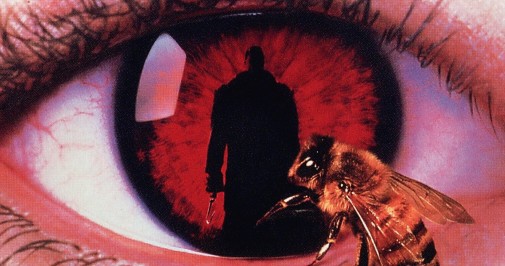
The Nia DaCosta-directed, Jordan Peele-produced, Candyman is scheduled to arrive in American theaters later this year. In the meantime, the original Candyman, a 1992 horror classic freely adapted from Clive Barker's The Forbidden, is newly streaming on Netflix. With all that in mind, this seemed like a great time to finally watch that acclaimed nightmare of 90s cinema, a picture I've long heard about and have considered one of my great blind spots as a fan of horror movies.
Despite astronomically high expectations, Candyman did not disappoint…
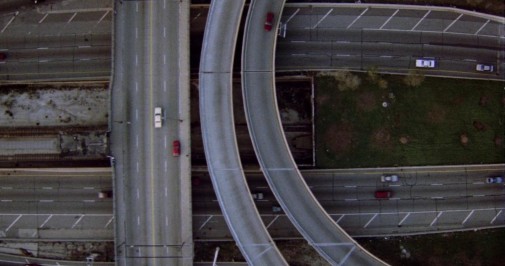
Right from minute one, the movie's out to disturb and unnerve. The opening credits unfurl over aerial shots of Chicago. The roads look like rivers of asphalt while the buildings lose their definition, reduced to blobs of nondescript concrete. The mundanity of the urban setting is thus transmuted into eerie otherworldliness. This mood is further intensified by Philip Glass's droning score. Full of choral passages and aggressive repetition, the music suggests a spiritual malignancy looming over the city, the chants of a ritual invocation, or perhaps a crying requiem. It's a chilling way to open the picture, especially since the reaction it provokes is visceral, irrational, more derived from marrow-deep anxieties than the particularities of a scary story.
Of course, the movie's called Candyman and it's time for us to meet its titular monster. Booming whilst shots of bearding bees fill the screen and the cityscape's consumed by a swarm, the honeyed voice of Tony Todd seems to come from another dimension. It's a diabolical miracle of sound design, making the actor's vocalizations ring through our ears, sounding like they're coming from inside the spectator's body. Too close and too far away, between a seduction and a demonic possession, the Candyman calls to us. He beckons and it's difficult to refuse him. We want to go closer.
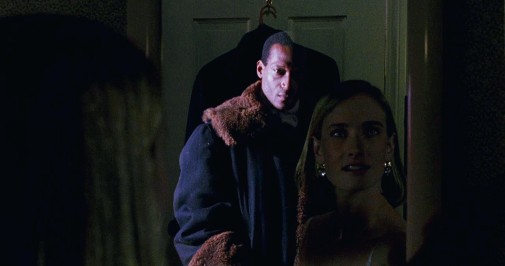
The haunting prologue moves into a more conventional slasher shlock. It's a familiar tale of a teenage babysitter and her boyfriend being victimized by a supernatural force. The murder victim made the mistake of calling Candyman's name five times while looking at the mirror, summoning the evil spirit who quickly splits her from groin to gullet to the grand delight of Virginia Madsen's Helen Lyle. She's an ambitious college student and the slasher scene we see was not part of this story's reality but an urban legend being told in an interview. Alongside her friend Bernadette, Helen's studying contemporary folklore and how community fears can become the fertile ground from which such myths grow.

Inspired by the Candyman stories and some information she got from the university's cleaning ladies, Helen decides to venture into the Cabrini-Green housing project where several foul murders have been attributed to the angry ghost. Wealthy, upper-class, über-educated and white, she's a fish out of water in the derelict environment of Cabrini-Green which, by the early 90s, had become a symbol for the USA's inability to do right by their impoverished communities, especially African-American ones. Not surprisingly, Helen's welcomed with open hostility by the people whose misery she wishes to exploit. She treats them as an intellectual commodity while acting as a benign influence who's just trying to help.
Of course, such ignorant arrogance won't go unpunished. Helen may think she understands these folks' lives better than they do, but she's tragically mistaken and the villain she's so arduously trying to demystify will prove to be too real for comfort. In that regard, Candyman presents us with a bold parable of race relations in America, one that's fueled by righteous anger stemming from atrocities across centuries. The antagonist himself is the product of that legacy of hate, having been punished in life for the "crime" of being Black and having consensual sex with a white woman. Mutilated, tortured, covered in bees, and set on fire, Candyman was once an innocent artist whose brutalized body birthed an immortal monster.
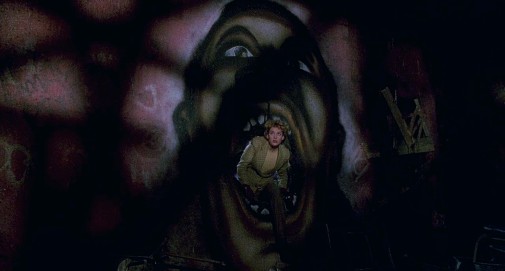
The people of Cabrini-Green may hate him, but they have the good sense to respect his threat. Helen has no time for that, ending up as the victim of gang violence before the Candyman finally appears and turns her life into an uninterrupted traverse through hell. I won't spoil the end, but, by virtue of being a genre picture, Candyman can deal with these complex topics with more bite and unvarnished candor than prestigious fare about the same themes. While such an approach might not have endeared the movie to awards voters or contemporaneous critics, it's aged better than most Oscar-winner about racial conflict.
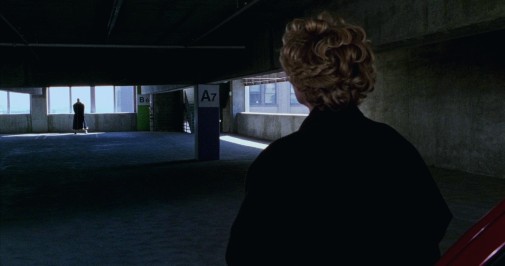
As evident by my description of the movie's opening salvos, Candyman is a masterpiece of horror direction by Bernard Rose, which, when combined with this beast of a script, results in a most unsettling creation. Every aspect of its construction works, like the shiny mechanisms of a Swiss clock, but it's the atmospheric details that elevate Candyman to the upper echelons of horror. Notice how the camera glides through its gloomy locations, a predatorial prowl manifested by nothing flashier than a tracking shot. Better yet is the way Todd and Madsen play up the chemistry between the monster and his victim as a twisted romance, imbuing the fatalistic storyline with a sense of pent-up eroticism. Candyman's as sexy as it is scary.
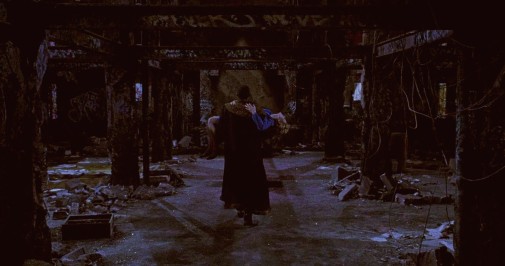
Delicious and deadly, like a bonbon with a razor hidden inside, Candyman's a treat to any fan of horror cinema. Come taste its wonders, but don't say its name too many times. You know what happens when you get to the fifth utterance.
Candyman, Candyman, Candyman, Candyman, Can…